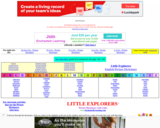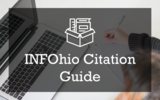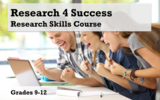
Design thinking makes clear the systematic process that allows innovators to learn and apply techniques to solve critical problems in a creative way. In Module 2, students read the true story of William Kamkwamba in The Boy Who Harnessed the Wind (Young Readers edition) and how he used design thinking to confront the devastating effects of famine in his country, Malawi. In response to this seemingly insurmountable problem, William spent countless hours in the local library, reading science textbooks and searching for a possible solution. Through careful research, and after many rounds of trial and error, William used available materials and scraps from the local junkyard to construct a windmill that brought electricity to his community, allowing kids to study into the evening, adults to recharge their mobile phones, and water pumps to irrigate the fields and produce more abundant harvests. Propelled by unshakable perseverance, a keen awareness of his community’s needs, and compassion for those suffering around him, William models how innovative thinkers can leverage design thinking to address critical problems in their own communities. Inspired by this concept, students work towards a performance task in which they research and present another innovative solution designed to address a critical issue. For this Solution Symposium, students interact with their audience to explain how design thinking and habits of character led to the development of a successful solution.
In Unit 1, students read the first nine chapters of the anchor text, building background on William Kamkwamba and the problems William’s community faced in rural Malawi, in a village with limited resources and access to education. Through two Language Dives using key sentences in the anchor text and a close read of a supplemental text, students practice identifying the central idea, citing textual evidence, analyzing how individual sentences contribute to the development of a text’s central ideas, and determining the meaning of words and phrases in a text.
In Unit 2, students finish reading the text, and demonstrate their continued reading-skill development in the Mid-Unit 2 Assessment, which uses an excerpt from the text to assess students’ abilities to interpret the figurative and connotative meanings of unfamiliar words, analyze information portrayed in various media formats, and explain how a small portion of a text contributes to the central idea. By clearly delineating the many problems William faced, students see how each was addressed through science, research, and habits of character, like perseverance. With the support of explicit mini lessons on research skills, students then begin independent research on an innovator who, like William, designed a product to solve a critical problem. These research skills are assessed in the End of Unit 2 Assessment.
Through writing a collaborative informational essay about William in the first half of Unit 3, students deepen their understanding of the design thinking process and explore how William Kamkwamba used this process to solve a problem. The unit builds towards the performance task, a Solution Symposium, at which students present and share interactive displays of their research on an innovative solution to a critical problem. The Solution Symposium engages audience members in a conversation in which the student shares his or her answers to the following questions: (1) how was design thinking used to solve this problem and (2) how were habits of character used to solve this problem? Following the symposium, as the End of Unit 3 Assessment, students will collaborate to discuss how habits of character help people like those featured in their research solve critical problems.
- Subject:
- English Language Arts
- Material Type:
- Module
- Unit of Study
- Provider:
- EL Education
- Date Added:
- 05/17/2024



